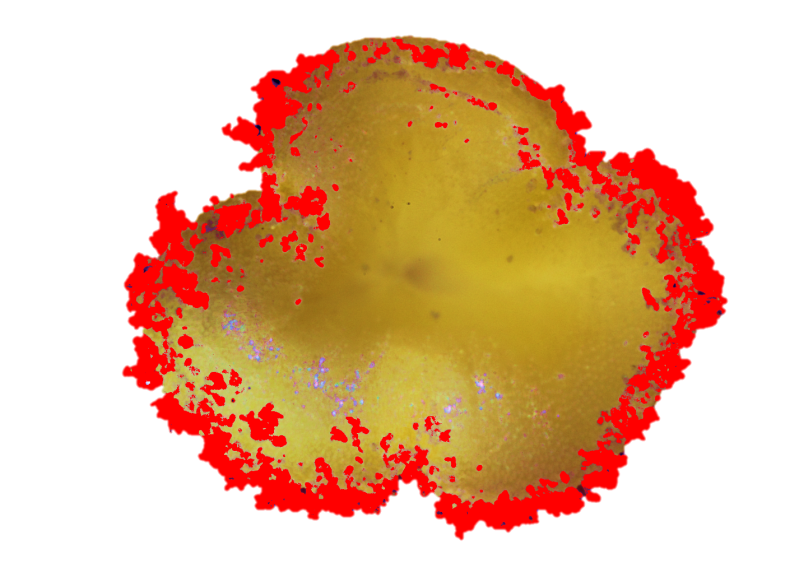Quantifying pollen deposition with macro photography and 'stigmagraphs'
DOI:
https://doi.org/10.26786/1920-7603(2017)sixAbstract
The pollen deposited during a single visit by a flower visitor (“single-visit deposition”; SVD) is often measured by removing the stigma from the flower and counting the pollen grains deposited under a microscope. This process precludes study of any subsequent interactions between the flower and later visitors (such as pollen removal from the stigma). Furthermore, if the stigma is excised too soon after the pollinator visit, the flower may be rendered infertile, such that any analyses of fruit or seed yield in relation to pollen deposition must be done indirectly. Here, a method of pollen deposition measurement was developed using macro photography and the open-source image-analysis software program ImageJ/Fiji. Using colour segmentation options within the program, the pollen grains can be distinguished from the background stigmatic surface, and the percentage of stigma coverage can be calculated. This pollen deposition measurement method leaves the sampled flower in the field to develop into fruit, allowing any subsequent yield or quality analyses to be conducted directly.

Downloads
Published
How to Cite
Issue
Section
License
Copyright (c) 2017 Gail MacInnis, Jessica Forrest

This work is licensed under a Creative Commons Attribution 4.0 International License.
JPE is an open access journal which means that all content is freely available without charge to the user or his/her institution.
Authors who publish with this journal agree to the following terms:
1) Authors retain copyright and grant the journal right of first publication with the work simultaneously licensed under a Creative Commons Attribution License that allows others to share the work with an acknowledgement of the work's authorship and initial publication in this journal.
2) Authors are able to enter into separate, additional contractual arrangements for the non-exclusive distribution of the journal's published version of the work (e.g., post it to an institutional repository or publish it in a book), with an acknowledgement of its initial publication in this journal.
3) Authors are permitted and encouraged to post their work online (e.g., in institutional repositories or on their website) prior to and during the submission process, as it can lead to productive exchanges, as well as earlier and greater citation of published work (See The Effect of Open Access).
To assure a broader targeted audience, content will be included into databases (such as EBSCO) and directories (such as DOAJ).











